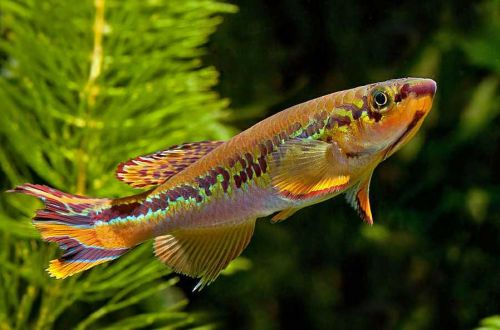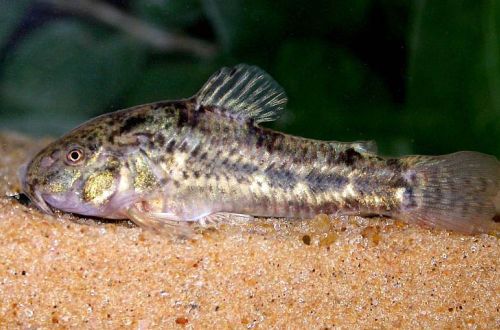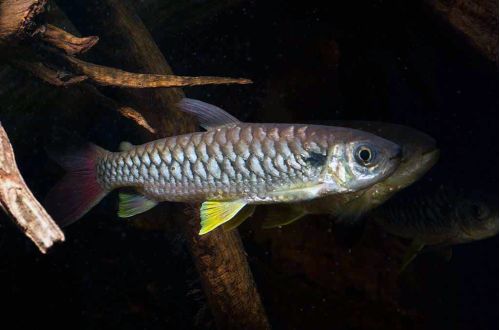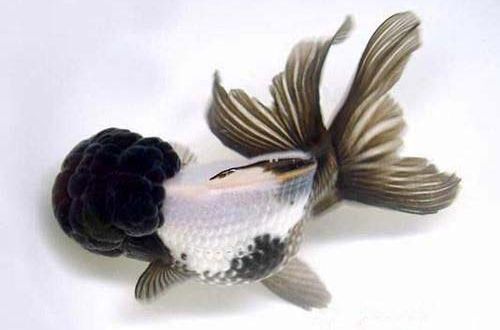
Delta Killy
Delta Killy, scientific name Fundulopanchax deltaensis, belongs to the Nothobranchiidae family. An amazing fish with a bright original coloration, which is not often seen in natural reservoirs. This fish has an important feature, because of which it is not recommended for most aquarists – this is a very short lifespan, only 1 year, at best 2, in a home aquarium.

A similar feature was formed evolutionarily, the fish comes from the reservoirs of Africa, which annually dry up completely during the dry season. But their eggs are able to survive without water for a long time, guaranteeing the emergence of a new generation in the next rainy season. Delta Killy is mainly kept for breeding and subsequent sale. The substrate with eggs for several months can be in a semi-moist state, which allows them to be sent by mail.
Contents
Habitat
It first received a scientific description relatively recently in 1976. The fish was found in swamps located in the Niger Delta, which dry up during the dry season, which leads to the death of their inhabitants. If the reservoirs are preserved, then the fish is able to live another year. In the wild, it feeds on small aquatic insects, crustaceans, and worms.
Description
The body is elongated with well-developed fins, the head is flattened, the lower jaw is larger than the upper jaw, creating a curve towards the top. The structure of the mouth is designed to capture prey from the surface of the water. The coloration is very variable, ranging from greenish or blue to light brown cream. Dark spots throughout the body form a broken line stretching from head to tail. It is accentuated by a blue-green or cream edging. The fins are also colored and may have dark spots. All of the above applies to males to a greater extent, females look much more modest.
Food
It is a carnivorous species, a small predator. Successful keeping and breeding is possible only if their gastronomic preferences are satisfied. The diet should consist of live or frozen food: bloodworms, mosquito and fly larvae, daphnia, Drosophila flies, etc.
Maintenance and care
Due to the short lifespan, it is recommended to keep them in a species aquarium, without representatives of other species. A pair of fish will require a tank of at least 80 liters, and a flock of 5-6 individuals will need more than 200 liters. Delta Killy needs very clean water and is sensitive to changes in its hydrochemical composition, so a productive filter, along with a weekly renewal of part of the water by 25–30%, is a must. Other necessary equipment includes an aerator, a heater, and a lighting system. You should also take care of the lid to avoid accidental jumping out.
Fish are able to live in fresh water, but their breeding is possible only in brackish water. The concentration of sea salt is approximately 5 grams per 10 liters, which is about 4 teaspoons without a slide.
In the design, the imitation of the natural habitat looks optimal. Substratum of sand and/or small pebbles with plant growths arranged in groups to leave free space for swimming. As shelters, place a few snags, branches, roots.
The peaceful species gets along well with other fish of a similar size, but due to the short lifespan, keeping together can create inconvenience. Sometimes males arrange quite serious skirmishes among themselves, so in a small aquarium, pair keeping (male / female) will be the best option. In a large tank from 200 liters, flocking with several males is also acceptable.
Sexual differences
Males are brightly colored, unlike females, which have almost no bright colors, and are half the size.
Breeding / breeding
Breeding Delta Killy is unlike any other. For spawning, you will need a tank of 80 liters or more, an airlift filter and a heater are required from the equipment. The water is brackish with a fixed temperature of 24 – 25,5°C. In the design, thickets of plants are desirable, in which the female will hide from the male and rest.
Spawning requires a substrate. It is necessary to purchase clean processed peat, place it in a container, for example, a ceramic bowl. Then the bowl with the contents is placed in the aquarium, it is in it that the fish will hide their eggs. When spawning is complete, remove the peat and dry it at room temperature, laying it on a net or fine grate so that the water drains faster. Do not use heating devices or fire for drying, drying should occur naturally. Do not dry completely, let the torus remain slightly damp, place it in a plastic bag, seal it and place it in a dark place with a temperature of about 25 °C.
After 3-4 months, remove the sealed peat and immerse it in a tank of clean water, fry will appear within a week. Feed brine shrimp nauplii, small daphnia and similar food.
If successful breeding is possible, then you can keep more males to get a beautiful and vibrant community in your aquarium.
Diseases
The fish are extremely hardy, in a balanced aquarium there are usually no health problems. Deteriorating conditions can trigger an outbreak of diseases. Read more about symptoms and treatments in the Aquarium Fish Diseases section.





